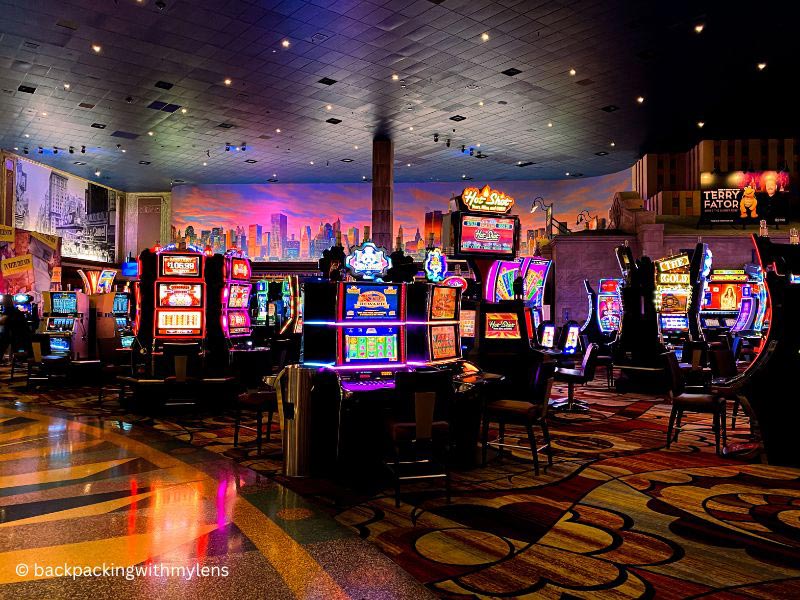
Casino games have long captivated human interest, drawing gamblers into a universe filled with luck, strategy, and the allure of thrill. Each game is meticulously crafted not just for enjoyment, but also to inspire targeted emotional responses that keep gamblers immersed and committed. Understanding the reasons behind these designs reveals much about how psychology plays a crucial role in the gaming experience.
From the bright lights and lively sounds to the intricate layering of rules and payoffs, casino games are designed to create an atmosphere of excitement and eagerness. Game designers leverage psychological principles to influence player behavior, whether through the use of jackpots, close-call situations, or social connections. By examining these factors, we can better appreciate how casino games fulfill not just a desire for entertainment, but more profound psychological needs for adventure and uncertainty.
Comprehending Player Behavior
Casino games are designed with a profound understanding of player psychology, which is vital for drawing in and retaining players. The excitement of the game, combined with the expectation of winning, creates a formidable allure Truyenqq. Game designers make use of elements like sound effects, colorful graphics, and captivating gameplay to capture attention and generate emotional responses. These sensory elements enhance the immersive experience, making players feel more involved in the game.
Another significant aspect of player behavior is the concept of risk/reward dynamics. Casino games often weigh high-stakes situations with the potential for substantial rewards, which can result in the event known as near-miss effect. When players come near to winning, the brain secretes dopamine, reinforcing their behavior and encouraging them to continue playing in pursuit of that elusive win. This cycle of wish and letdown plays a crucial role in how games are designed and promoted.
Lastly, social factors also play a pivotal role in player behavior at casinos. Many games are crafted to be played in pairs or in company with other players, creating a sense of togetherness and communal experience. The community engagement inherent in games like blackjack enhances enjoyment and can culminate in prolonged gaming periods. Designers take advantage on this by crafting environments that encourage players to remain, connect, and come back, making the overall casino experience more appealing.
The Role of Visuals and Sound
Visuals and audio play a significant role in enhancing the gambler’s experience within casino games. Designers utilize bright colors, striking graphics, and captivating animations to attract players’ attention and maintain their focus. The use of motifs, such as exploration or luxury, helps create an enthralling atmosphere that transports players into another world. By connecting to the senses, these elements add to a heightened emotional response, encouraging players to interact more deeply with the games.
Audio design is equally important in reinforcing the overall experience of casino games. The mix of ambient music, sound effects for winning combinations, and ambient noises creates an auditory landscape that holds players enthralled. Sounds associated with wins, such as chiming bells or celebratory music, evoke feelings of thrill and satisfaction, encouraging players to continue playing. These audio cues are strategically placed to enhance the thrill of the game and create a more engaging experience.
Moreover, the synchronization of visuals and audio is crucial for reinforcing the game’s overall concept and atmosphere. Each element should coordinate seamlessly to create a unified experience that pulls players in. The effective use of this synergy not only enhances user satisfaction but also increases the chances of return play, as players become more invested in the immersive world that the gambling games offer. This thoughtful integration of visuals and sound ultimately enhances player involvement and loyalty.
Reward Structures and Participation
The creation of gambling games greatly relies on reward structures to keep participants involved and coming back for more. These structures are rooted in behavioral theories that take advantage of human behavior and motivation. Participants are often motivated by the thrill of winning, which is reinforced by immediate feedback through the game’s design. This prompt satisfaction not only enhances the overall experience but also cultivates a sense of success, encouraging participants to keep playing in hopes of bigger gains.
Gaming establishments implement various incentive systems, such as jackpots, extra rewards, and increased rewards, to engage players. These features create a layer of excitement that sustains engagement. Additionally, the randomness of outcomes plays a significant role in sustaining interest. The variable reward system, where wins are unpredictable but happen often enough, keeps players on edge and motivated to continue participating. This loop of hope and anticipation is essential to the success of casino games.
Moreover, community aspects, such as tournaments and collaborative options, enhance the participation factor by leveraging the competitive nature of players. The shared experience of gaming with others can intensify the thrill of success and create a community atmosphere within the casino. By integrating these social dynamics with effective incentive structures, gambling experiences don’t just offer fun but also nurture a deeper connection among players, reinforcing their commitment to the overall experience.